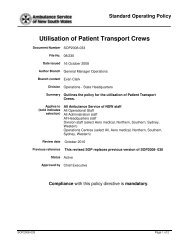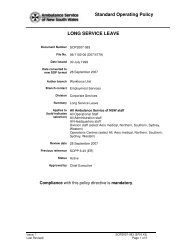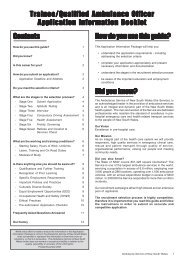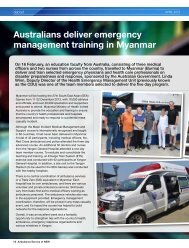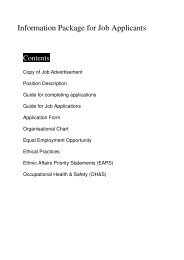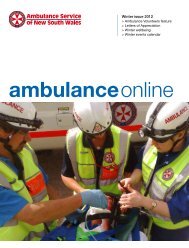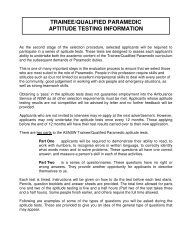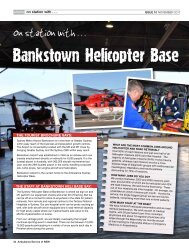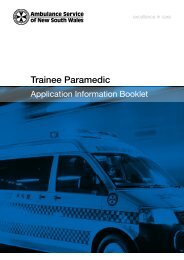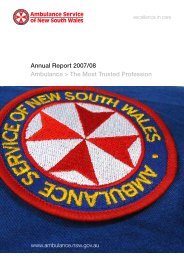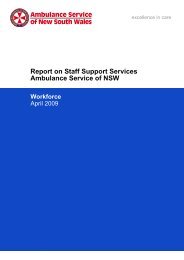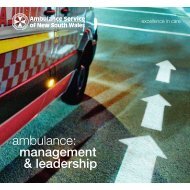atsb final report released 16 may 2013 - Ambulance Service of NSW
atsb final report released 16 may 2013 - Ambulance Service of NSW
atsb final report released 16 may 2013 - Ambulance Service of NSW
Create successful ePaper yourself
Turn your PDF publications into a flip-book with our unique Google optimized e-Paper software.
eported that he did not advise the flight crew <strong>of</strong> the intention to bypass the weaklink during the satellite telephone call or while attaching the tag line to the hook.The latter was due to radio communication difficulties.Following the connection <strong>of</strong> the tag line to the winch hook by the supportparamedic, the ACM provided additional verbal guidance to assist the pilot toslowly manoeuvre the helicopter adjacent to the waterfall in preparation to deliverthe winch hook to the duty paramedic. As the helicopter was descended towards thewinching area, the effect <strong>of</strong> the fading daylight was exacerbated and the ACM useda handheld searchlight to confirm that the rear <strong>of</strong> the helicopter was clear <strong>of</strong> thesurrounding obstacles.At one stage during the positioning, the pilot advised the ACM that he wasexperiencing difficulty with the available hover reference 12 due to the sheer cliffand the effects <strong>of</strong> the waterfall. In response, and after approval from the pilot, theACM guided the pilot to descend and establish a hover position that was furtherdown the waterfall and closer to trees that were in the pilot’s field <strong>of</strong> view.From his position at the top <strong>of</strong> the waterfall, the support paramedic assessed that thehelicopter terminated to a hover such that the winch cable was running to the rockledge at about the 4 o’clock position with reference to the front <strong>of</strong> the helicopterwhen viewed from above (Figure 6). He further assessed that the helicopter wasabout 1.5 to 2 main rotor diameters (21 to 28 m) horizontally from his position andabout two thirds <strong>of</strong> the way down the waterfall.The ACM recalled that, once the helicopter was established in a hover, the winchcable was running to the ledge at between the 3 and 4 o’clock position and at anangle away from vertical <strong>of</strong> between 30 and 45 degrees (Figure 6). Although theACM could not recall the amount <strong>of</strong> winch cable deployed as displayed on thewinch control pendant, based on the relative position between the helicopter and therock ledge, he estimated that about 150 ft (46 m) <strong>of</strong> cable was deployed once thehelicopter was established in the hover. The injured canyoner recalled that, from hisvantage point on the rock ledge, the cable ran up to the helicopter at about45 degrees.12The fixed references (e.g. trees) that the pilot uses to visually assess whether the helicopter isdrifting from the intended hover position.- 8 -



